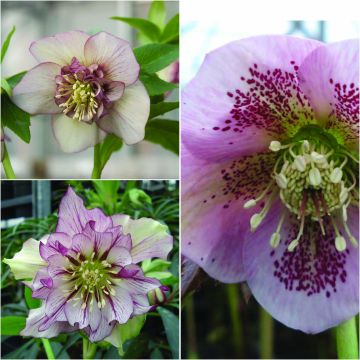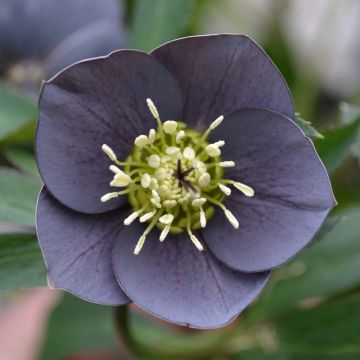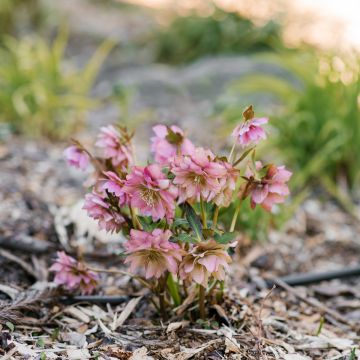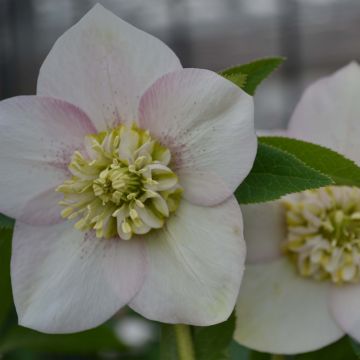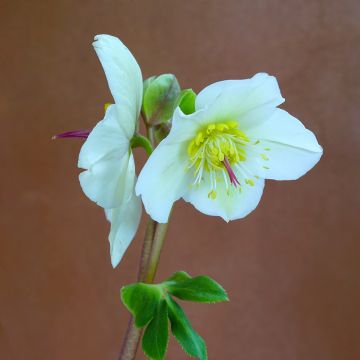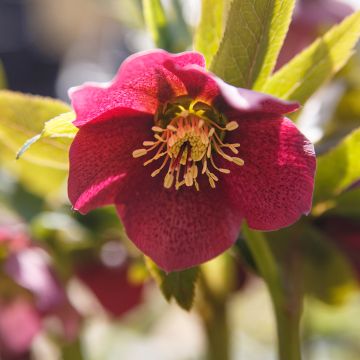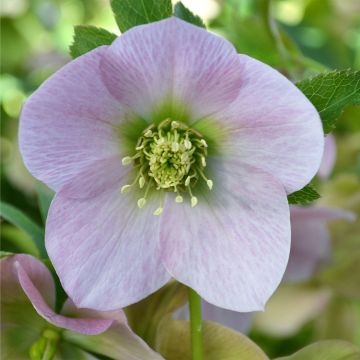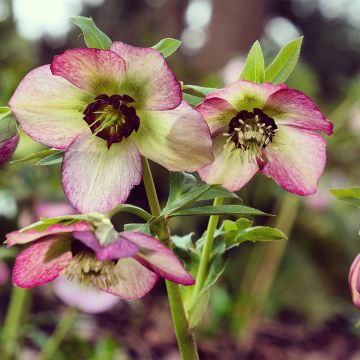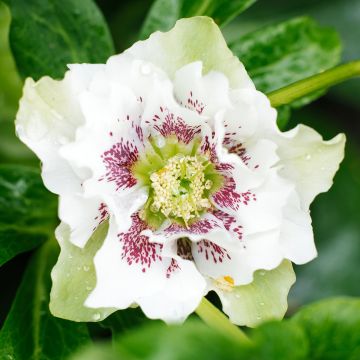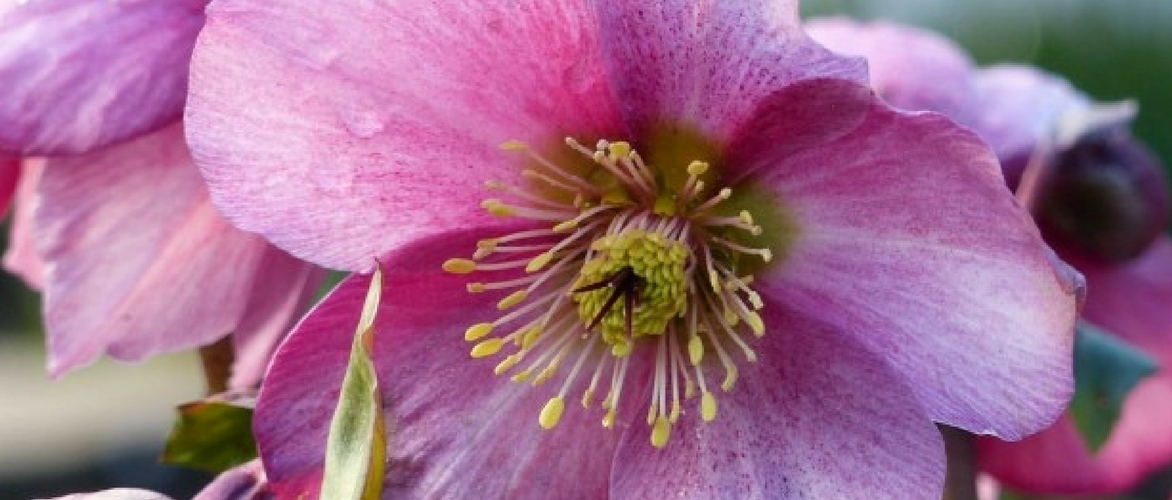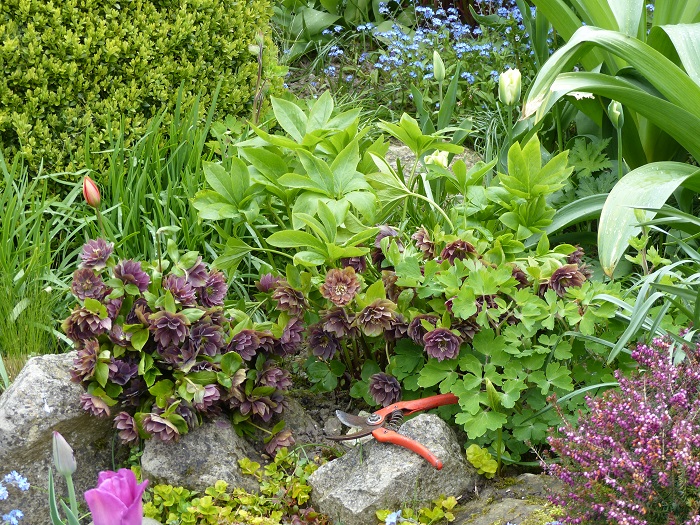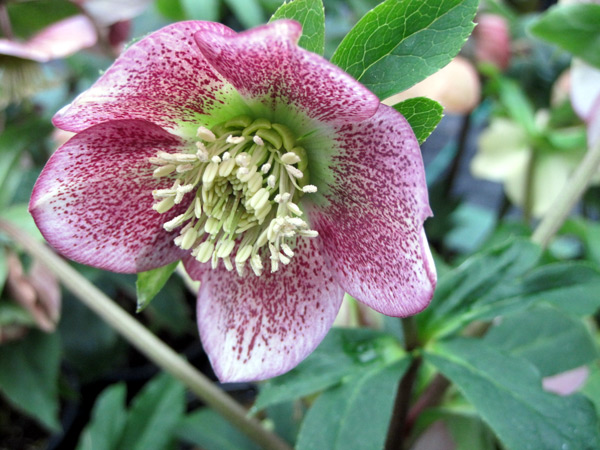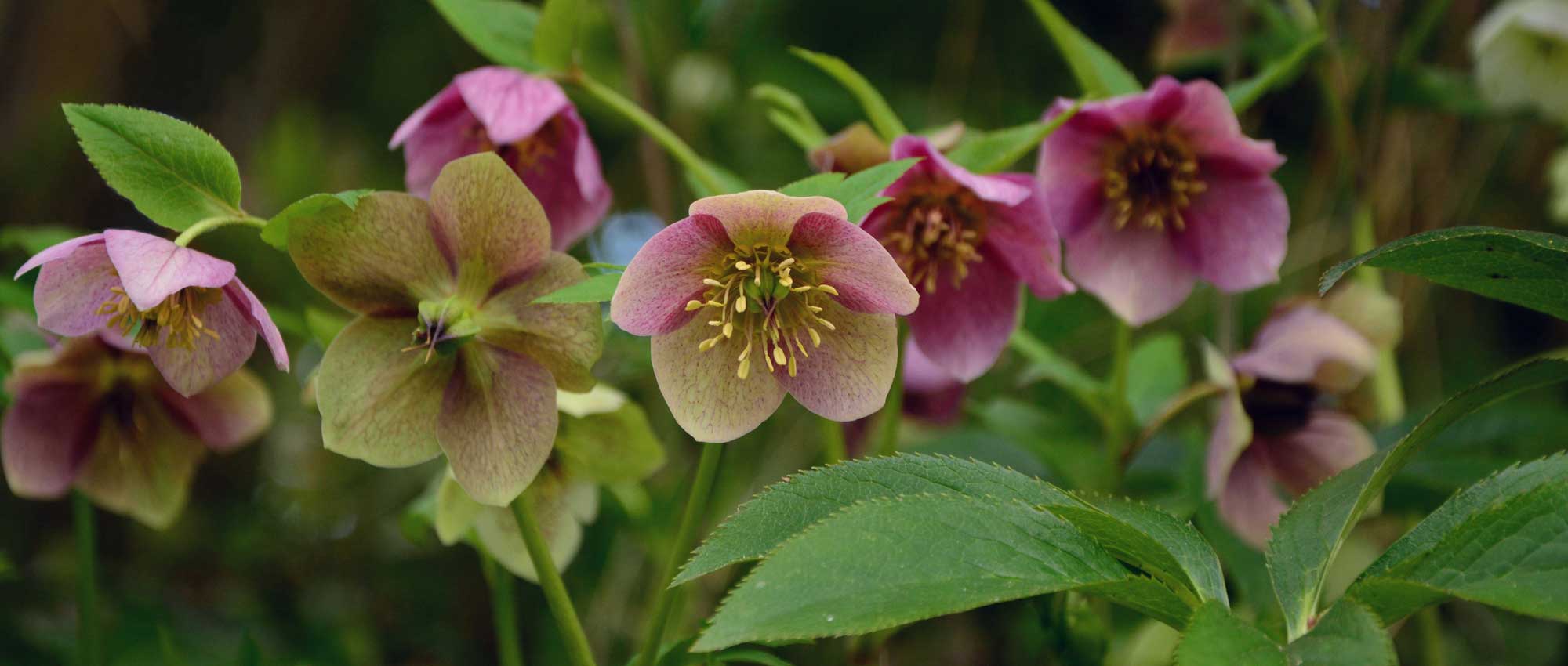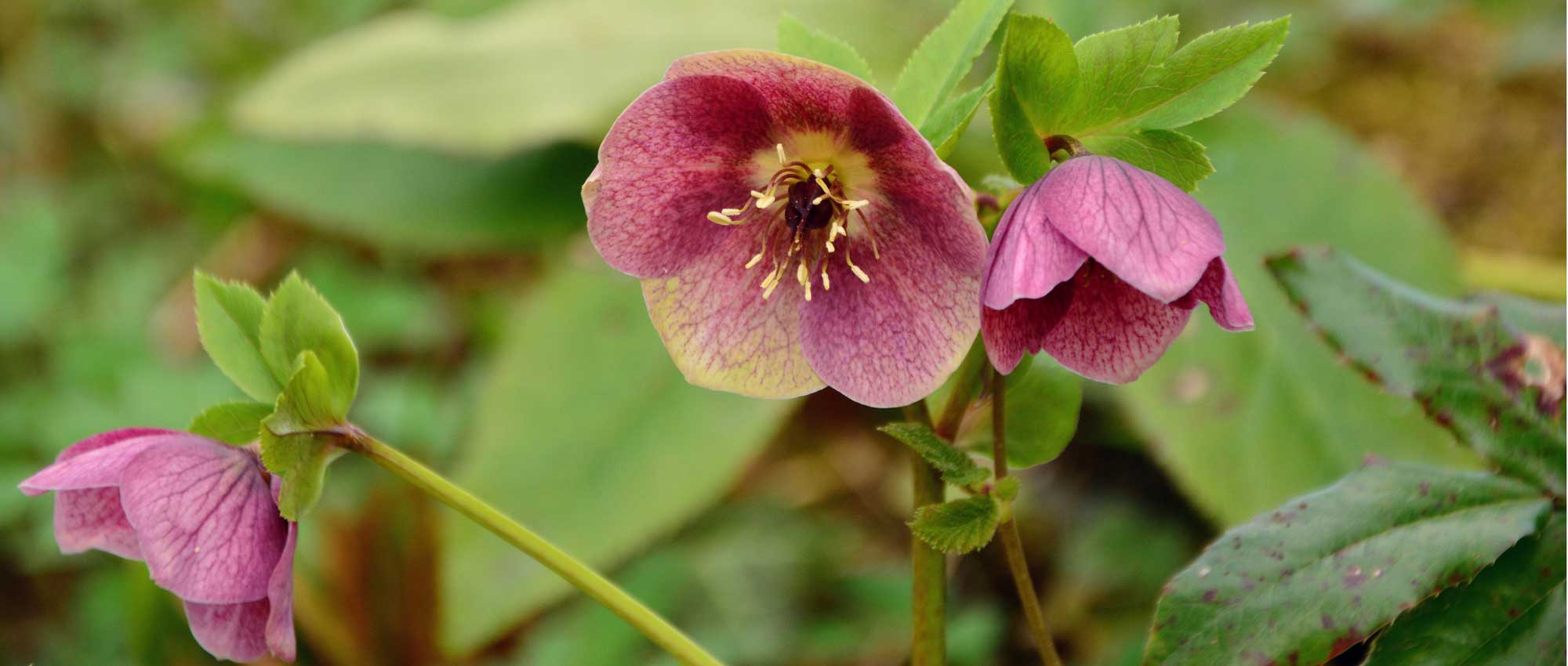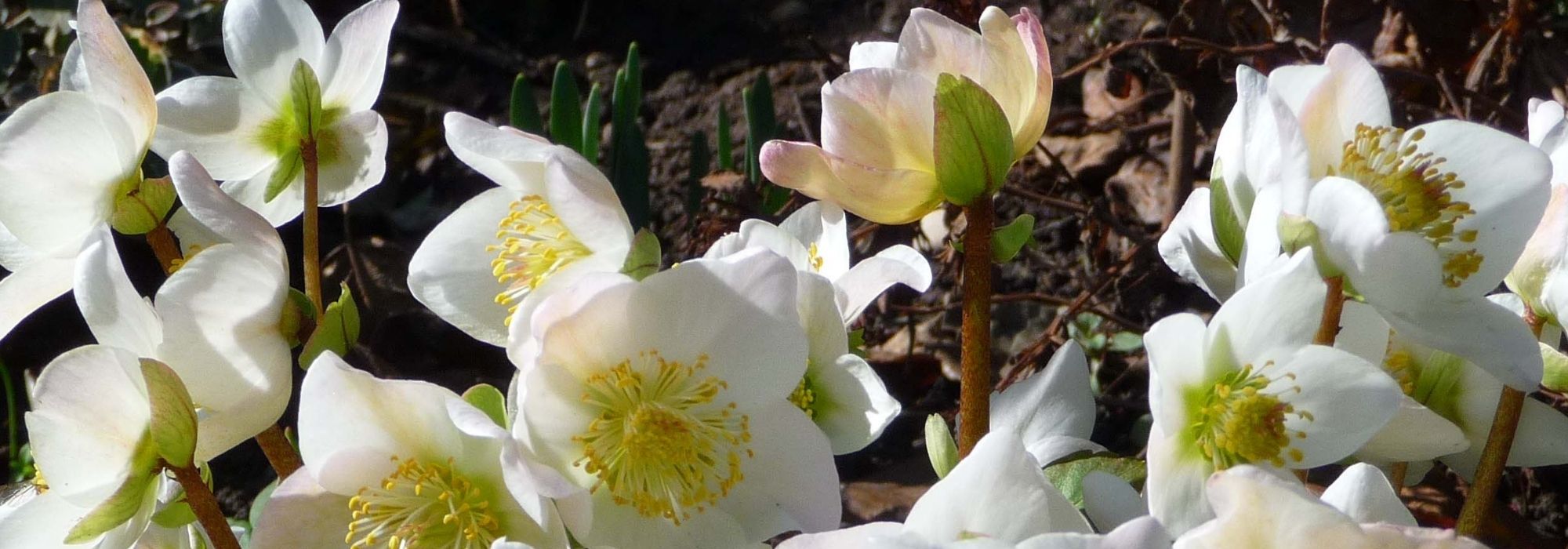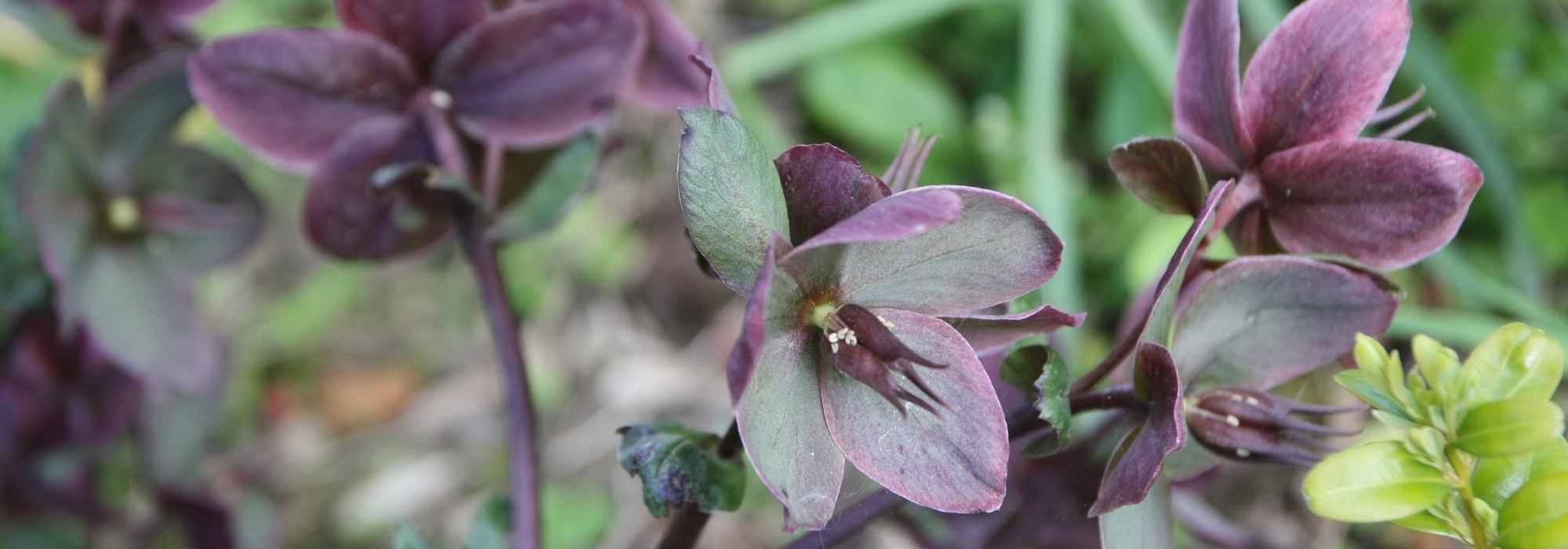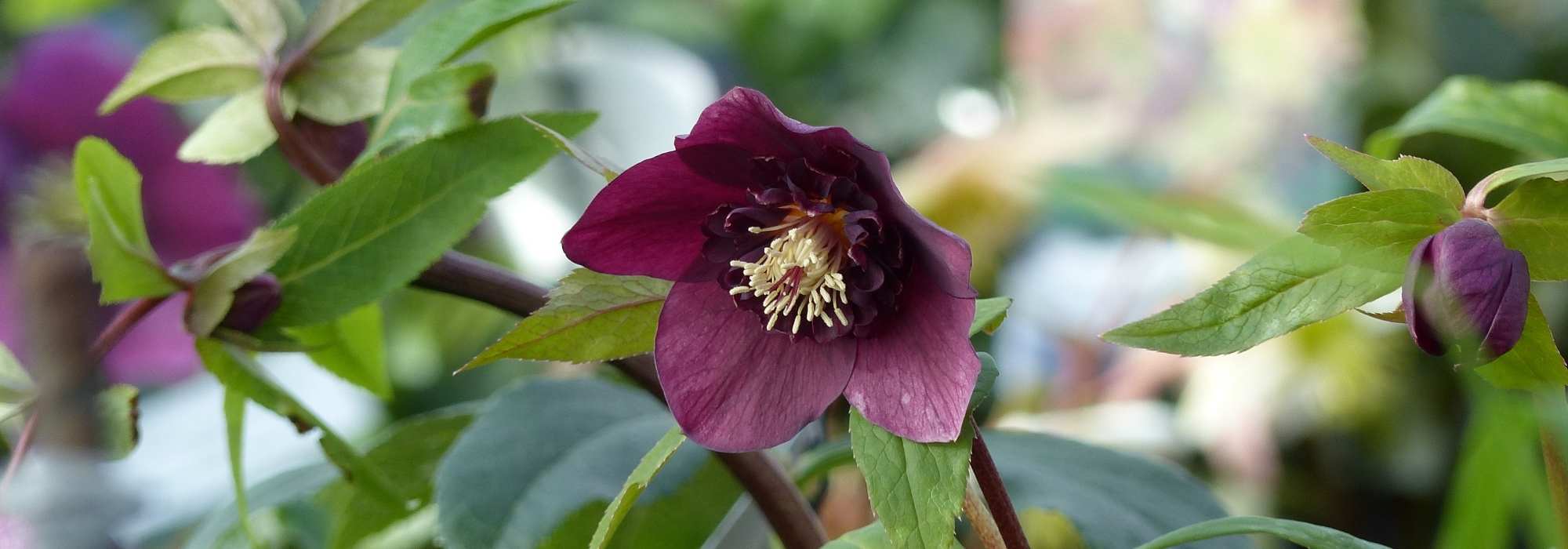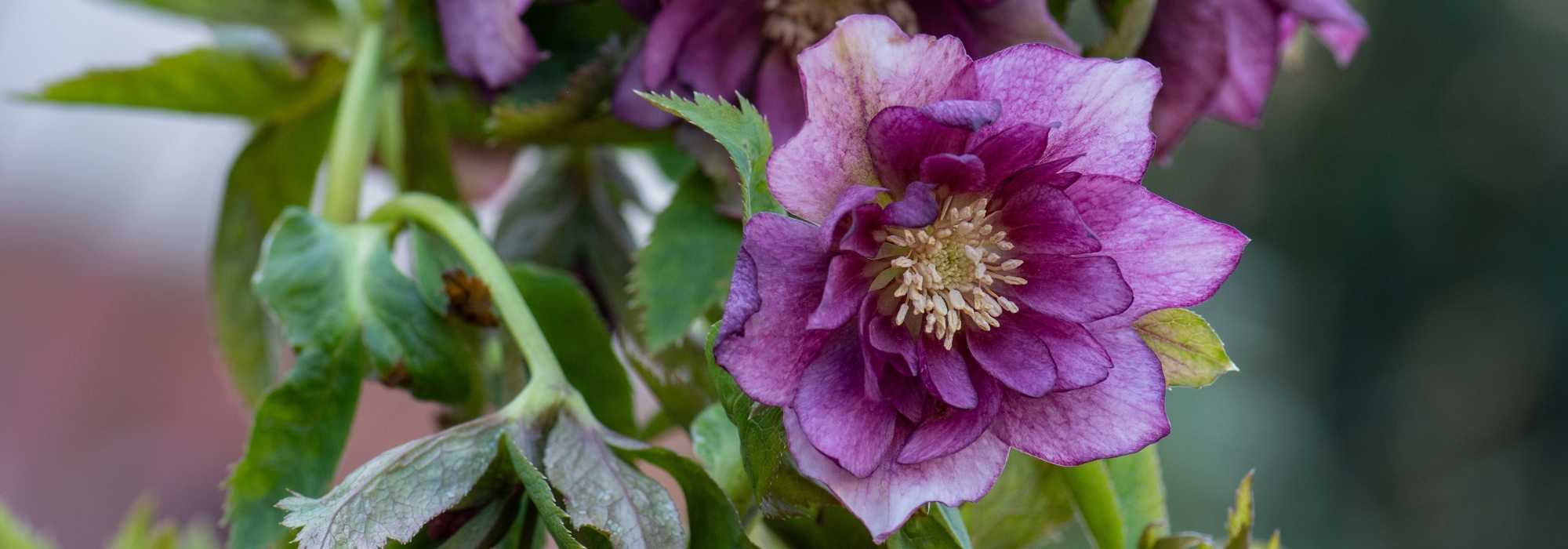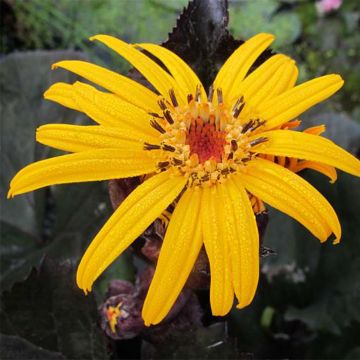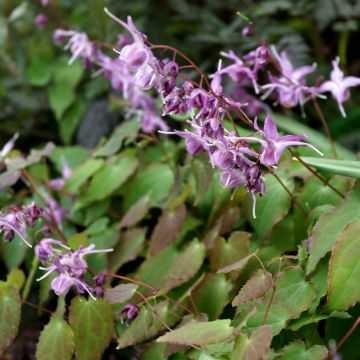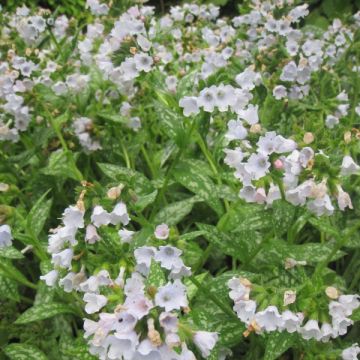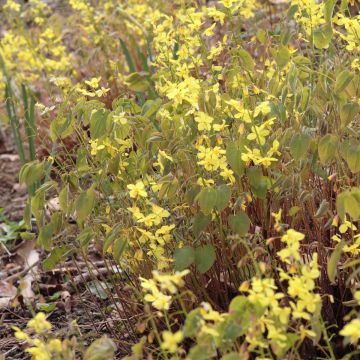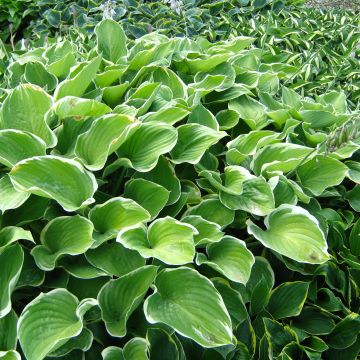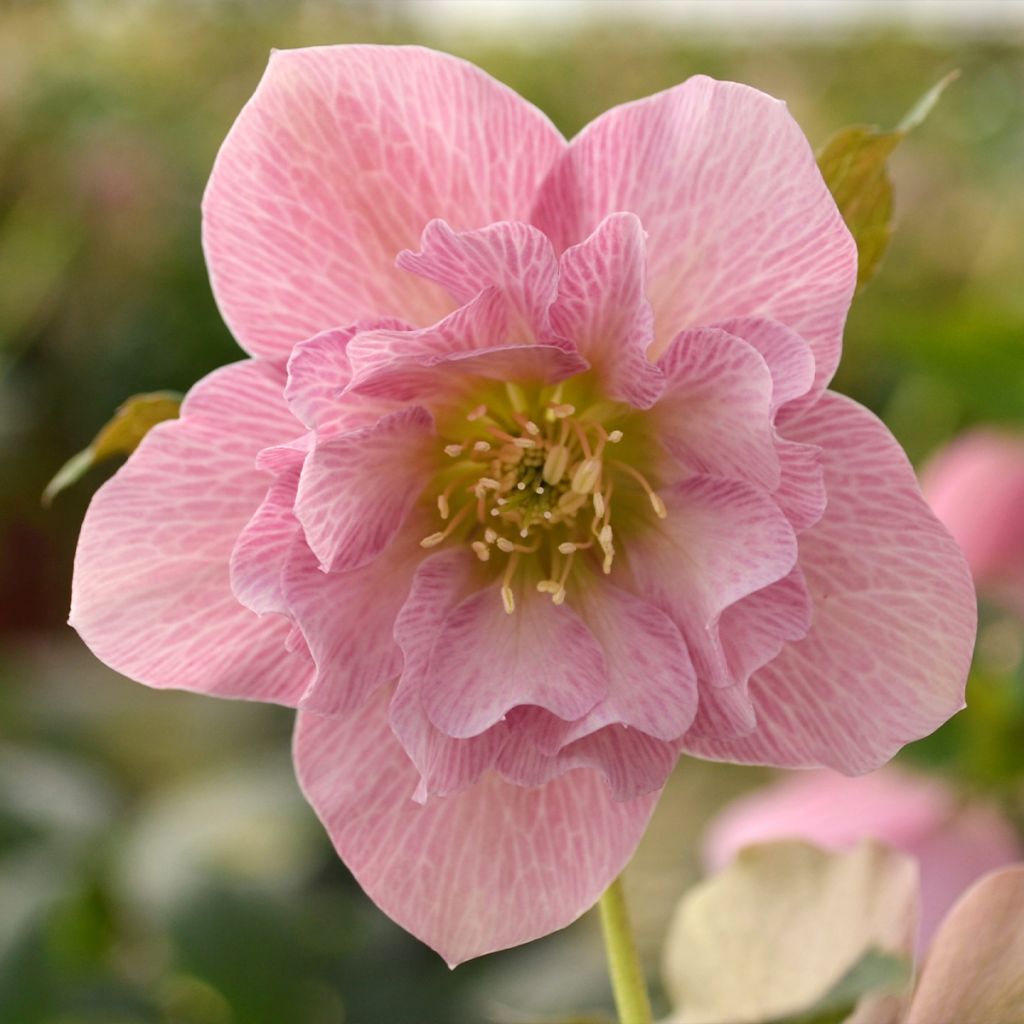

Hellébore ViV® Benedetta - Helleborus orientalis
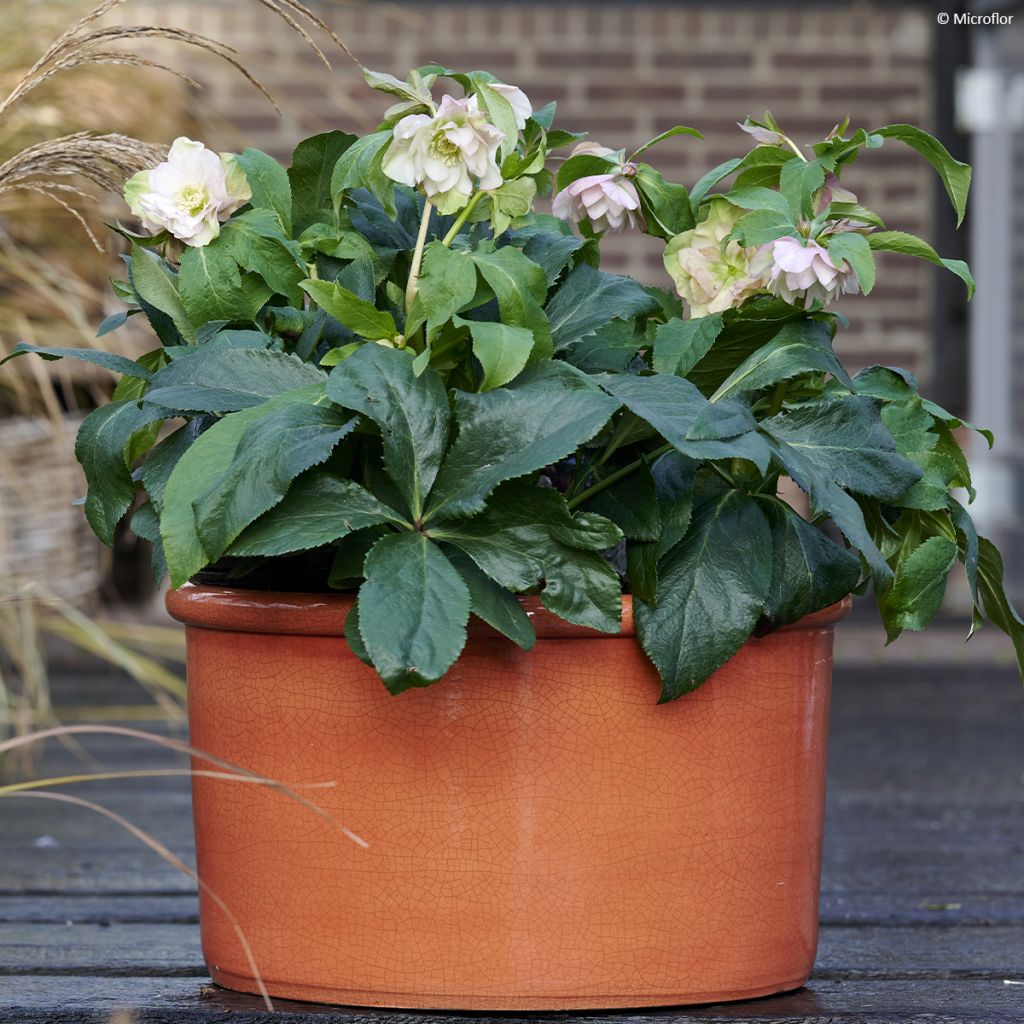

Hellébore ViV® Benedetta - Helleborus orientalis
Helleborus hybridus ViV Benedetta
Helleborus x hybridus ViV® Benedetta
Lenten Rose, Oriental Hellebore
A beautiful hellebore was delivered to me, in bloom, the white flowers are starting to blush with the cold and are very double and very beautiful!
michele C, 15/12/2024
Special offer!
Receive a €20 voucher for any order over €90 (excluding delivery costs, credit notes, and plastic-free options)!
1- Add your favorite plants to your cart.
2- Once you have reached €90, confirm your order (you can even choose the delivery date!).
3- As soon as your order is shipped, you will receive an email containing your voucher code, valid for 3 months (90 days).
Your voucher is unique and can only be used once, for any order with a minimum value of €20, excluding delivery costs.
Can be combined with other current offers, non-divisible and non-refundable.
Why not try an alternative variety in stock?
View all →This plant carries a 12 months recovery warranty
More information
We guarantee the quality of our plants for a full growing cycle, and will replace at our expense any plant that fails to recover under normal climatic and planting conditions.

Would this plant suit my garden?
Set up your Plantfit profile →
Description
Oriental Hellebore Benedetta is a variety from the Viv collection with a very compact habit. This Lenten Rose produces white double flowers, pink at the tips of the petals, enhanced by a bright green heart from which yellow stamens emerge. It is a robust and very hardy perennial, easy to grow in all regions. It forms a compact clump, as wide as it is tall, and remains decorative all year round thanks to its shiny dark green evergreen foliage. Growing in partial shade to full shade, it is the ideal plant to brighten up dark autumn and winter days.
Hellebores in the ViV series are varieties derived from in vitro multiplication. Unlike varieties derived from seed, in vitro-produced hellebores guarantee a flowering that is rigorously identical to the variety from which they originate. They have the same genetic characteristics as the mother plant, are more vigorous, and develop in a uniform manner.
Benedetta Hellebore belongs to the Ranunculaceae family, which includes about sixty genera and around 2500 species, mostly herbaceous. The species Helleborus orientalis is native to Greece, Turkey, and the central and eastern Caucasus. It is a perennial plant that hybridizes very easily with other species, resulting in randomly seeded hybrids with a wide variety of colours and forms. These hybrids are rarely given variety names, but are distinguished by their shape and colour characteristics. Oriental Hellebore is a hardy plant that can tolerate temperatures as low as -15°C, naturally growing in forests, thickets, and clearings up to 2,000 m (2,187 yards) altitude.
Benedetta grows into a compact and leafy clump measuring 35 to 45 cm (14 to 18in) in height and width. It is composed of palmate, slightly toothed, dark green and shiny, evergreen basal leaves, decorative throughout the year. These leaves actually live for only 8 months and are regularly replaced by new leaves. Benedetta blooms at the end of the year, for several weeks from November like the other varieties in the Viv collection. It forms double flowers, whose shape evokes that of certain old roses, lending them their romantic charm. The white petals become tinged with green near the heart, and take on shades of pink at their tips or fleetingly here and there. The delicate yellow stamen heart inserts itself into this harmony of soft colours and contributes fully to the beauty of the flower. The whole is highlighted by the dark background of the foliage, which accentuates the luminous character of the flowers. These flowers are inclined downwards, allowing water to slide off like an umbrella, protecting the heart from rotting. Hellebore does not like to be moved once established, with young plants sometimes taking time to bloom. The seeds are sown by ants.
Hellebores are among the most beautiful flowers of the late season. Their preference for shaded corners allows them to bring colour to these dark areas, and Benedetta's light flowering is particularly appreciated for this reason. Plant it under the canopy of a deciduous tree to protect it from the sun during the growing season and better enjoy its autumn and winter bloom; the pale winter sun does not harm it (in southern regions, it is better to provide shade from evergreens...). To ensure a long flowering period, plant Benedetta with Aster dumosus Anneke, a very compact dwarf Aster that is covered in bright pink flowers with yellow centres from August to October and tolerates partial shade. In the heart of winter, until early spring, small Cyclamen coum will delight you with its beautiful sculptural, pink flowers, which you can plant at the base of a Laurier-tin Gwenlian, a low-growing variety of Viburnum tinus that doesn't exceed 1.50 m (5ft) high. This compact shrub forms beautiful clusters of pink buds that open into small white flowers.
Helleborus hybridus ViV Benedetta in pictures


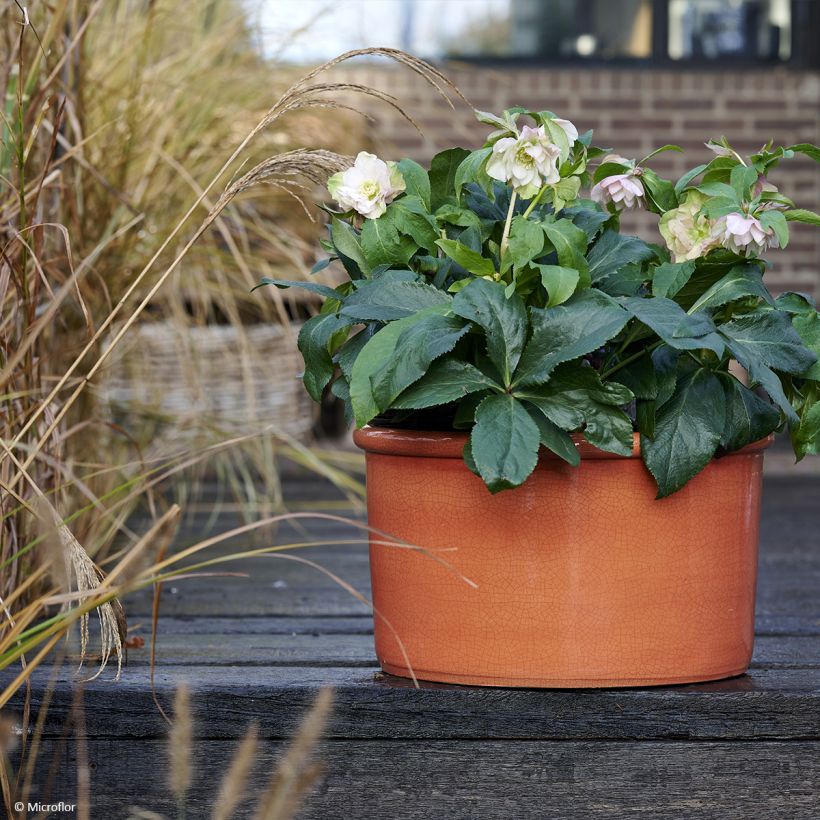

Flowering
Foliage
Plant habit
Safety measures
Botanical data
Helleborus
x hybridus
ViV® Benedetta
Ranunculaceae
Lenten Rose, Oriental Hellebore
Cultivar or hybrid
ingestion
Cette plante est toxique si elle est ingérée volontairement ou involontairement.
Ne la plantez pas là où de jeunes enfants peuvent évoluer, et lavez-vous les mains après l'avoir manipulée.
Pensez à conserver l'étiquette de la plante, à la photographier ou à noter son nom, afin de faciliter le travail des professionnels de santé.
Davantage d'informations sur https://plantes-risque.info
Planting and care
Oriental Hellebore Benedetta grows in any neutral to moderately chalky soil, rich, light or clayey, in partial or light shade, sheltered from cold and dominant winds. Avoid direct sunlight during the hottest hours in the south. This perennial is best planted from early autumn to spring. It thrives in deeply worked soil mixed with organic matter. To feed, use bone meal or another organic fertilizer. Water well after planting and add a layer of mulch 2 to 5 cm (1 to 2in) thick. Regularly remove faded leaves to improve flowering. Make sure to maintain a planting distance of 30 to 40 cm (12 to 16in) between each plant to promote their development. Hellebore does not tolerate stagnant water as it may cause it to rot.
The roots should not completely dry out in summer. Hellebores can be affected by a fungal disease transmitted by aphids, called black spot. Remove any stained leaves when the flower buds appear. Remove faded flowers after the seeds have fallen. They can also suffer from grey rot or die from collar ro due to poor growing conditions, in excessively wet situations.
On a balcony or terrace, plant this perennial in a pot 4 to 5 times larger than its size, as it needs space to develop its root system. This Hellebore can withstand temperatures down to -15°C or even lower, allowing it to adapt to almost all regions.
Planting period
Intended location
Care
Planting & care advice
-
, onOrder confirmed
Reply from on Promesse de fleurs
Similar products
Haven't found what you were looking for?
Hardiness is the lowest winter temperature a plant can endure without suffering serious damage or even dying. However, hardiness is affected by location (a sheltered area, such as a patio), protection (winter cover) and soil type (hardiness is improved by well-drained soil).

Photo Sharing Terms & Conditions
In order to encourage gardeners to interact and share their experiences, Promesse de fleurs offers various media enabling content to be uploaded onto its Site - in particular via the ‘Photo sharing’ module.
The User agrees to refrain from:
- Posting any content that is illegal, prejudicial, insulting, racist, inciteful to hatred, revisionist, contrary to public decency, that infringes on privacy or on the privacy rights of third parties, in particular the publicity rights of persons and goods, intellectual property rights, or the right to privacy.
- Submitting content on behalf of a third party;
- Impersonate the identity of a third party and/or publish any personal information about a third party;
In general, the User undertakes to refrain from any unethical behaviour.
All Content (in particular text, comments, files, images, photos, videos, creative works, etc.), which may be subject to property or intellectual property rights, image or other private rights, shall remain the property of the User, subject to the limited rights granted by the terms of the licence granted by Promesse de fleurs as stated below. Users are at liberty to publish or not to publish such Content on the Site, notably via the ‘Photo Sharing’ facility, and accept that this Content shall be made public and freely accessible, notably on the Internet.
Users further acknowledge, undertake to have ,and guarantee that they hold all necessary rights and permissions to publish such material on the Site, in particular with regard to the legislation in force pertaining to any privacy, property, intellectual property, image, or contractual rights, or rights of any other nature. By publishing such Content on the Site, Users acknowledge accepting full liability as publishers of the Content within the meaning of the law, and grant Promesse de fleurs, free of charge, an inclusive, worldwide licence for the said Content for the entire duration of its publication, including all reproduction, representation, up/downloading, displaying, performing, transmission, and storage rights.
Users also grant permission for their name to be linked to the Content and accept that this link may not always be made available.
By engaging in posting material, Users consent to their Content becoming automatically accessible on the Internet, in particular on other sites and/or blogs and/or web pages of the Promesse de fleurs site, including in particular social pages and the Promesse de fleurs catalogue.
Users may secure the removal of entrusted content free of charge by issuing a simple request via our contact form.
The flowering period indicated on our website applies to countries and regions located in USDA zone 8 (France, the United Kingdom, Ireland, the Netherlands, etc.)
It will vary according to where you live:
- In zones 9 to 10 (Italy, Spain, Greece, etc.), flowering will occur about 2 to 4 weeks earlier.
- In zones 6 to 7 (Germany, Poland, Slovenia, and lower mountainous regions), flowering will be delayed by 2 to 3 weeks.
- In zone 5 (Central Europe, Scandinavia), blooming will be delayed by 3 to 5 weeks.
In temperate climates, pruning of spring-flowering shrubs (forsythia, spireas, etc.) should be done just after flowering.
Pruning of summer-flowering shrubs (Indian Lilac, Perovskia, etc.) can be done in winter or spring.
In cold regions as well as with frost-sensitive plants, avoid pruning too early when severe frosts may still occur.
The planting period indicated on our website applies to countries and regions located in USDA zone 8 (France, United Kingdom, Ireland, Netherlands).
It will vary according to where you live:
- In Mediterranean zones (Marseille, Madrid, Milan, etc.), autumn and winter are the best planting periods.
- In continental zones (Strasbourg, Munich, Vienna, etc.), delay planting by 2 to 3 weeks in spring and bring it forward by 2 to 4 weeks in autumn.
- In mountainous regions (the Alps, Pyrenees, Carpathians, etc.), it is best to plant in late spring (May-June) or late summer (August-September).
The harvesting period indicated on our website applies to countries and regions in USDA zone 8 (France, England, Ireland, the Netherlands).
In colder areas (Scandinavia, Poland, Austria...) fruit and vegetable harvests are likely to be delayed by 3-4 weeks.
In warmer areas (Italy, Spain, Greece, etc.), harvesting will probably take place earlier, depending on weather conditions.
The sowing periods indicated on our website apply to countries and regions within USDA Zone 8 (France, UK, Ireland, Netherlands).
In colder areas (Scandinavia, Poland, Austria...), delay any outdoor sowing by 3-4 weeks, or sow under glass.
In warmer climes (Italy, Spain, Greece, etc.), bring outdoor sowing forward by a few weeks.






























